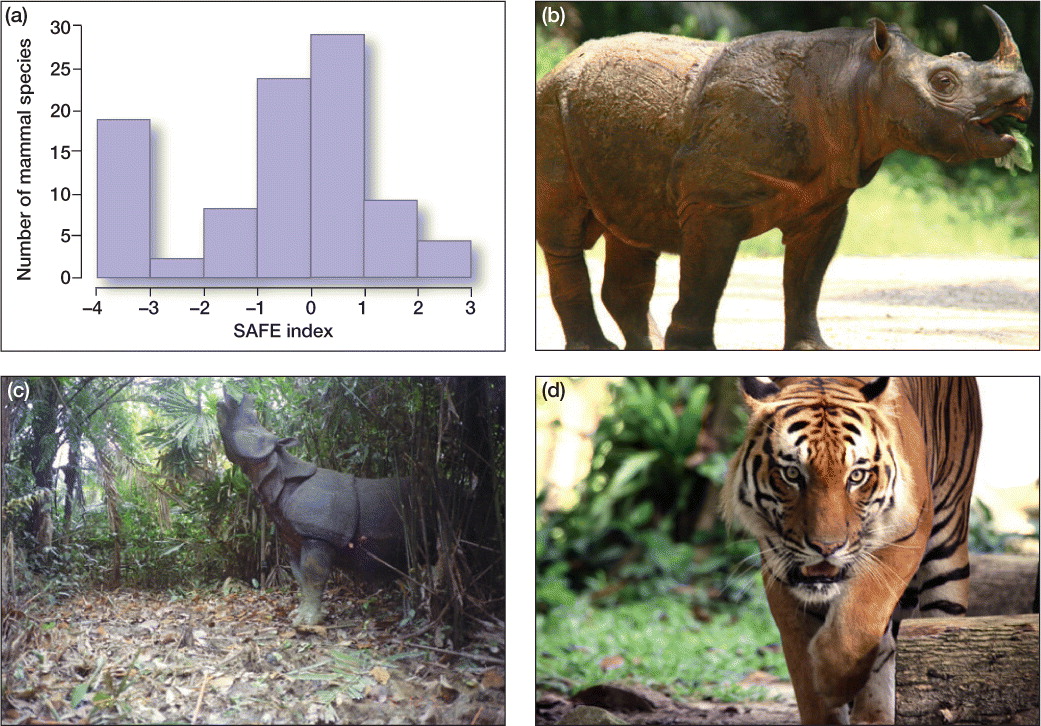“The very fact that a species is near extinction implies that its final demise will have negligible impact” (“Animals and the Market” by Michael Levin).
“In biology and ecology, extinction is the end of an organism or of a group of organisms (taxon), normally a species. The moment of extinction is generally considered to be the death of the last individual of the species, although the capacity to breed and recover may have been lost before this point. Because a species’ potential range may be very large, determining this moment is difficult, and is usually done retrospectively. This difficulty leads to phenomena such as Lazarus taxa, where a species presumed extinct abruptly “re-appears” (typically in the fossil record) after a period of apparent absence. Through evolution, new species arise through the process of speciation—where new varieties of organisms arise and thrive when they are able to find and exploit an ecological niche—and species become extinct when they are no longer able to survive in changing conditions or against superior competition. The relationship between animals and their ecological niches has been firmly established. A typical species becomes extinct within 10 million years of its first appearance, although some species, called living fossils, survive virtually unchanged for hundreds of millions of years. Most extinctions have occurred naturally, prior to Homo sapiens walking on Earth: it is estimated that 99.9% of all species that have ever existed are now extinct” (source).
It has been argued that the extinction of some species can be beneficial to human beings, as in the case of the eradication or the attempted eradication of parasites, viruses, bacteria, or insects that transmit human diseases. However, the extinction of any species alters the Earth’s biodiversity, and the ultimate consequences of such eradications cannot be predicted. Some also argue that it isn’t worth trying to save all endangered species: “Extinction is not always a bad thing. If every plant and animal that ever lived was still with us, it would be a very crowded planet. In fact, our planet would be uninhabitable. When one species disappears, other species can evolve and fill the natural void left by the species that are no longer here. I have no problem trying to save some of the larger mammals and birds that are threatened by our existence if we can, but we have to draw a line somewhere. Instead of spending our resources trying to prevent some species of insects from becoming extinct, we should look at ourselves in the mirror and think about how to co-exist with other members of our own species. Someday we may become extinct and the world will not miss us any more than it will miss other species now endangered” (“Endangered species? Not every bug needs saving” by Richard Fagerlund).
Even if we can’t save all endangered species, how do we decide which ones are “worth” trying to save? The “SAFE index” (Species Ability to Forestall Extinction, 2011) proposes a way to measure how close a species may be to extinction. One of the coauthors states that SAFE is designed to be an adjunct to the International Union for Conservation of Nature (IUCN) Red List of Threatened Species, not a replacement. “Our index shows that not all Critically Endangered species are equal. A combined approach — using the IUCN Red List threat categories together with the SAFE index — is more informative than the IUCN categories alone, and provides a good method for gauging the relative ‘safety’ of a species from extinction…For example, our studies show that practitioners of conservation triage may want to prioritize resources on the Sumatran rhinoceros instead of the Javan rhinoceros. Both species are Critically Endangered, but the Sumatran rhino is more likely to be brought back from the brink of extinction based on its SAFE index…Alternatively, conservationists with limited resources may want to channel their efforts on saving the tiger, a species that is at the ‘tipping point’ and could have a reasonable chance of survival.”
Article by Bill Norrington




